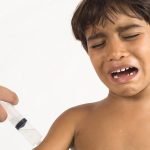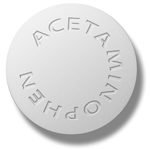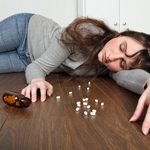Trying to keep our children safe from harm is a top priority. Yet often lying within their reach right in our homes is a major danger and potential killer: medications. New research has found that poisoning by medication has risen tremendously in young children in the past few years.
The study, at Cincinnati Children’s Hospital Medical Center, analyzed the patient records for 453,559 cases across the United States from the National Poison Data System between 2001 and 2008.1 Focusing on the age group most commonly affected by accidental overdoses — children five years old and younger — the researchers noted a disturbing trend. Visits to the emergency room for medication poisonings among children five and under had increased by 30 percent in those eight years.
While there were some instances in which the poisoning took place because an adult caregiver made a mistake in giving the child too great a dosage of an over-the-counter or prescription drug, the vast majority — a whopping 95 percent — occurred when the children found unattended medicine and took it themselves. Prescription medications were found to be a greater problem than OTC meds. Small children who took someone else’s prescription drugs were documented to have more than 248,000 visits to emergency rooms, close to 42,000 hospital admissions, and over 18,000 injuries in this time period.
Not surprisingly, the drugs that caused the greatest harm to the children who took them were sedatives, cardiac medications, and opioid painkillers. There were 66 deaths among the children who took the medications, but many more entered comas or developed blood sugar problems as a result. Most of those children recovered, but these are all needless potential tragedies.
And why are so many more children getting into medications around the house? Simply because there are so many more medications lying around most houses now. According to information from the Centers for Disease Control, between 2000 and 2010, the percentage of people who had taken at least one prescription drug in the past month increased from 44 percent to 48 percent.2 Those taking two or more drugs rose from 25 percent to 31 percent. The people taking five or more drugs increased from 6 percent to 11 percent. What’s more, those are the numbers people admitted to when surveyed; the reality could be substantially higher. It also fails to take into account the OTC drugs many people use frequently.
Drug manufacturers respond to news about children overdosing with public service announcements reminding people to keep their medications hidden. They consider making the medication caps harder to remove. But the real problem is that clearly there are way too many drugs available — so much so that we almost become cavalier about them, leaving them lying about as though they were mere after dinner mints. Almost anyone who wants to be medicated just has to visit a doctor and complain of pain or anxiety.
Opioid painkiller prescriptions alone have increased exponentially in recent years. According to a report published in the Journal of the American Medical Association last year, between 1999 and 2006 the use of prescription opioids increased nearly fourfold in the United States.3 In fact, addiction to opioids has now become so chic that it is a central plot point in the hit television show, House — in which Dr. Gregory House “sports” an addiction to Vicodin like a badge of honor, in an blatant homage to Sherlock Holmes’ cocaine addiction. Unsurprisingly, this increase in opioid prescriptions comes with a near doubling in poisoning deaths among adults in the U.S., going from 20,000 to 37,000 largely because of overdoses of opioid painkillers. In fact, unintentional poisoning has surpassed motor vehicle crashes as the leading cause of accidental death among adults between the ages of 35 and 54. And adolescents of 12 to 17 years old are often getting started on drugs by trying the prescription pills they find in mom and dad’s medicine cabinet.
So, to keep both yourself and your children safe from accidental overdoses, you can first try keeping as few meds in the house as possible. Don’t request a prescription from the doctor unless it is truly, seriously necessary. If pain is your issue, explore some pain management alternatives such as chiropractic, acupuncture, acupressure, and herbal remedies that may be sufficient to provide relief. If depression has made you think of turning to pharmaceutical antidepressants, you may want to think twice. Living the right kind of lifestyle, which includes eating nutritiously and exercising regularly, should optimize your chances of keeping free of illness and feeling your best, leaving you with little need for medications of any type.
1 Bond, G. Randall; Woodward, Randall W.; and Ho, Mona. “The Growing Impact of Pediatric Pharmaceutical Poisoning.” The Journal of Pediatrics. 16 September 2011. Elsevier Inc. 10 November 2011. <http://www.jpeds.com/article/S0022-3476(11)00771-2/fulltext>.
2 Gu, Qiuping, Dillon, Charles F.; and Burt, Vicki L. “Prescription Drug Use Continues to Increase: for 2007-2008.” Centers for Disease Control and Prevention. September 2010. Centers for Disease Control and Prevention. 10 November 2011. <http://www.cdc.gov/nchs/data/databriefs/db42.htm>.
3 Coolen, P.; Lima, A.; Sabel, J.; and Paulozzi, L. “Overdose Deaths Involving Prescription Opioids Among Medicaid Enrollees–Washington, 2004-2007.” Journal of the American Medical Association. 6 January 2010. American Medical Association. 10 November 2011. <http://jama.ama-assn.org/content/303/1/21.full#sec-1>.












Prevention is better than
Prevention is better than cure! But the parents should know first aid measures if accidental poisoning occur.